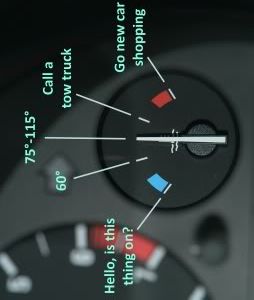Originally Posted By: Yannick
Quick & easy one here ;
5w30 , 5 is the grade when oil is cold (thinner). 30 is the grade (thicker) when oil is hot.
Can we say when the engine temp gage(not the oil temp gage) is locate to its normal level when running the oil is now at 30grade? Engine temp gage is reading the prestone temp I think ,and not the engine (oil) temp. At then end when the engine get the 30grade oil ?
I hope you understand my question.
thanks
I'm just going to quote myself from another thread here where I believe I explained it quite well:
Missing are the new SAE 16 and 12 grades due to the date of the post.
Original discussion here:
https://bobistheoilguy.com/forums/ubbthreads.php/topics/3515622/Oil_change_question
The number in front of the W is not a representation of an SAE 5 "when cold", which doesn't exist as a motor oil grade, neither does a 10 or a 15, all of which are a xW classifications. The same goes for a 0. Is there an SAE 0? No. The SAE grading system for oils under the non-W classification starts at SAE 20.
Just as an example here, Mobil 1 0w-40 and Mobil 1 0w-20 both carry the 0w designation. Which means they meet the cold temperature performance requirements for that classification. This classification is simply a set of limits for MAXIMUM viscosity at -40C and -35C respectively. That is the ONLY thing those two oils have in common:
M1 0w-20:
Visc@100C: 8.7cSt
Visc@ 40C: 44.8cSt
MRV@ -40C: 9,200cP
M1 0w-40:
Visc@100C: 13.5cSt
Visc@ 40C: 75.0cSt
MRV@ -40C: 31,000cP
Is 9,200cP close to 31,000cP? Nope. But they are both under 60,000cP at -40C (and under 6,200cP for CCS @ -35C), so they both get to carry the 0w designation. There is no temperature that M1 0w-40 is even CLOSE to the same viscosity as the 0w-20.
You'll notice the 0W and 5W designations have the exact same visc minimums @ 100C, with no maximums for 100C or HTHS. You'll also notice the distinct absence of an SAE 5, 10 and 15 grade on the chart
Those grades only exist as ISO hydraulic oil grades, not engine oils.





